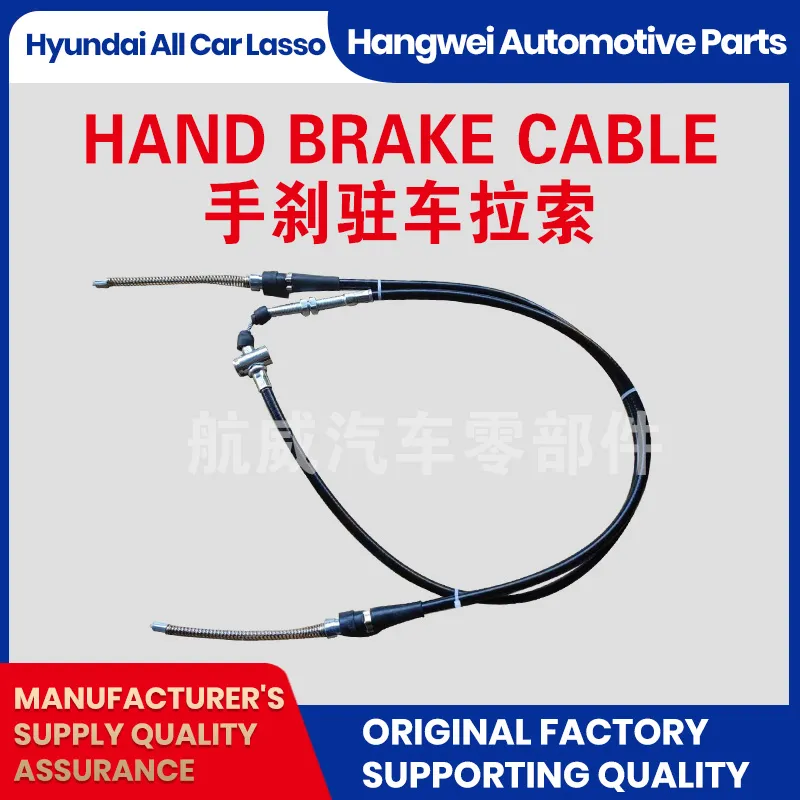Understanding the Importance of Rear Derailleur Cables in Bicycle Performance and Maintenance
Understanding Rear Derailleur Cable A Crucial Component for Cycling Performance
Cycling is a sport and a mode of transportation that has evolved significantly over the years. One of the essential components that contribute to the smooth functioning of a bicycle is the rear derailleur, which is vital for shifting gears efficiently. A key aspect of this mechanism is the rear derailleur cable, an often-overlooked part that plays a critical role in a cyclist's performance.
What is a Rear Derailleur Cable?
The rear derailleur cable is a thin, flexible wire that connects the gear shifters located on the handlebars to the rear derailleur itself. The derailleur's main function is to move the chain between various gear cogs on the rear cassette when the rider shifts gears. By pulling on the cable, the shifter sends a signal to the derailleur to shift the chain to a higher or lower gear, allowing for a more comfortable and efficient ride on varying terrains.
Importance of the Rear Derailleur Cable
1. Precision in Shifting The primary function of the rear derailleur cable is to ensure precise gear changes. If the cable is frayed, stretched, or improperly tensioned, it can result in missed shifts or skipping. This not only frustrates the cyclist but can also lead to increased wear and tear on the bike’s drivetrain components.
2. Cable Tension and Performance Proper tension in the rear derailleur cable is necessary for optimal performance. Too much slack can prevent the derailleur from responding quickly, while too much tension can make shifting difficult. Regularly checking and adjusting the cable's tension can significantly enhance shifting performance and overall ride quality.
3. Durability and Maintenance Rear derailleur cables are typically made from stainless steel or other corrosion-resistant materials, but they can still deteriorate over time due to exposure to the elements, dirt, and grime. Routine maintenance, such as cleaning the cable housing and lubricating the cable, can extend its lifespan and ensure smooth operation. If a cable shows signs of wear, it should be replaced promptly to avoid mechanical failures during rides.
rear derailleur cable

Choosing the Right Cable
When it comes to replacing a rear derailleur cable, selecting the right cable is crucial. Cyclists can choose from various thicknesses, materials, and specialized coatings that can reduce friction for smoother shifting. It's important to consult your bike's specifications or a professional mechanic to ensure compatibility with your particular derailleur model.
Signs of a Failing Cable
Cyclists should be on the lookout for specific signs that indicate the rear derailleur cable may be failing. Common indicators include
- Difficulty in shifting gears - Slipping or skipping gears - A frayed or worn cable - Rattling noises from the derailleur
If any of these symptoms are observed, it’s advisable to inspect the cable and make necessary adjustments or replacements.
Conclusion
The rear derailleur cable might seem like a small part of a larger system, but it is a crucial element in ensuring a smooth and efficient cycling experience. Regular maintenance, appropriate tension, and timely replacements can significantly enhance a cyclist's performance. As cycling continues to grow in popularity, understanding and caring for components like the rear derailleur cable will help riders get the most out of their bikes, providing them with a more enjoyable and efficient ride. Whether casually commuting or competing in races, a well-maintained rear derailleur system is essential for any cyclist's success.
-
Upgrade Your Control with Premium Throttle CablesNewsAug.08,2025
-
Stay in Control with Premium Hand Brake CablesNewsAug.08,2025
-
Experience Unmatched Performance with Our Clutch HosesNewsAug.08,2025
-
Ensure Safety and Reliability with Premium Handbrake CablesNewsAug.08,2025
-
Enhance Your Vehicle with High-Performance Clutch LinesNewsAug.08,2025
-
Elevate Your Ride with Premium Gear CablesNewsAug.08,2025
